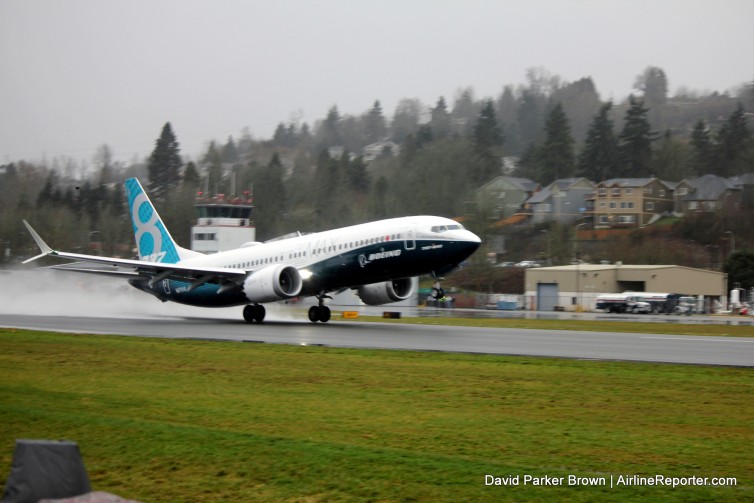
The 737 MAX taking off for its first flight
BOEING 737 MAX FIRST FLIGHT: Follow us live
Earlier today, the Boeing 737 MAX successfully completed its first flight. We have been doing things a bit differently and sharing our live coverage of the flight here. Later, we will update our story with photos and more information. Think of this as more of an evolving story, and don’t forget to come back for more!
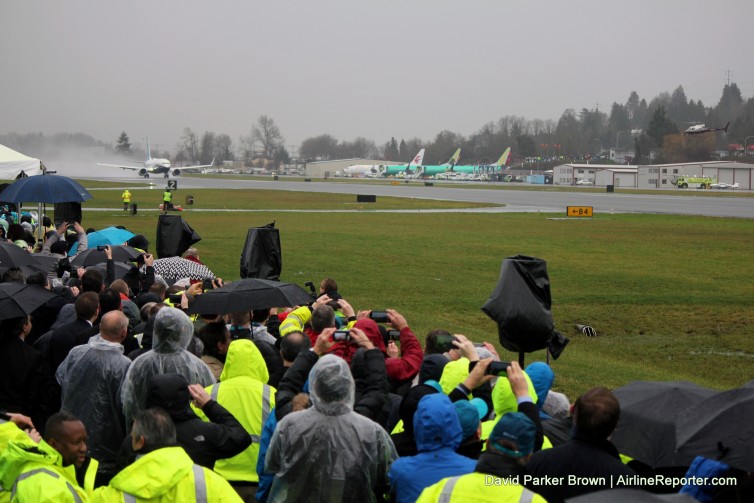
Several thousand Boeing employees and media braved the rain to witness the first flight of the 737 MAX
The 737 MAX took off on its first flight at 9:46 am (PST) to the cheers of several thousand of Boeing employees and media. The plane flew for nearly three hours, before landing a few miles away at Boeing Field (BFI) at about 12:32 pm. You can watch a live feed from Boeing and we will continue to cover the event live on our Twitter feed below:
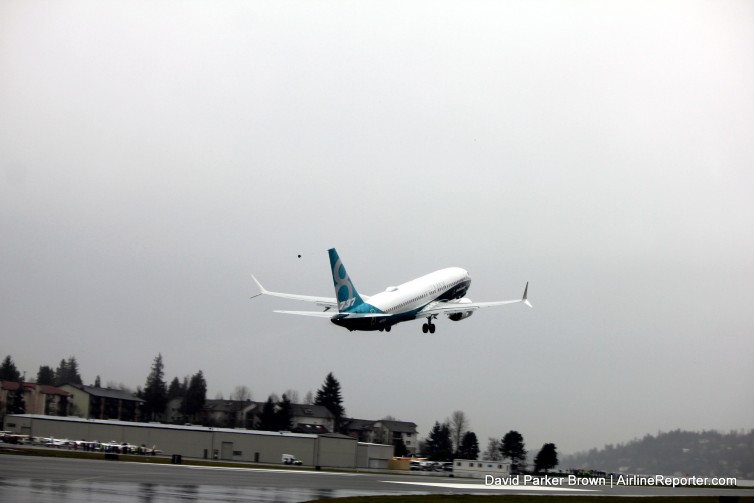
Up, up, and away! The 737 MAX leaves the ground on its maiden flight. We’ll catch up with it soon at Boeing Field.
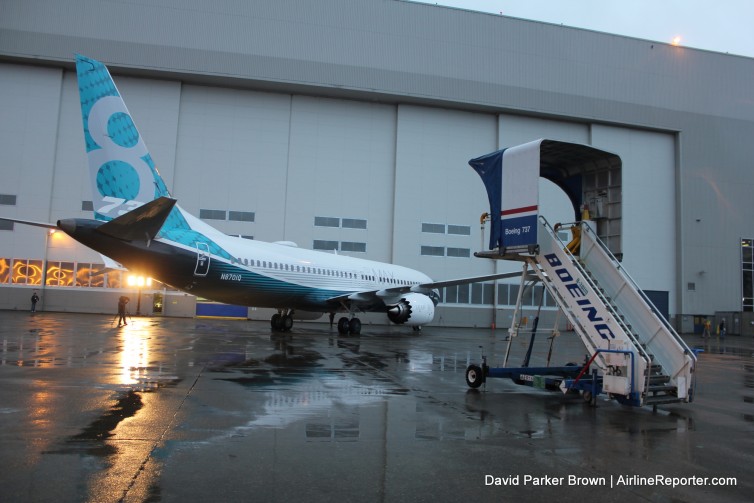
The past and future meet – the old 737 livery on the stairs and the the MAX’s new livery on the jet
This week, Boeing took the time to not only show off their improved production line for the 737 MAX, but also the first (and second) aircraft. Over two days, AirlineReporter visited Boeing’s 737’s factory in Renton, Wa to learn more about the 737 MAX and how Boeing will go about producing them.
The MAX is the fourth generation of the venerable 737 and will replace the 737 Next Generation (or 737 NG). The first 737 first flew in April 1967 and, although it might have the same name and a similar appearance, the aircraft has changed dramatically over the years.
The MAX will come in three main flavors: the MAX 7, MAX 8, and (wait for it) MAX 9. I have to say that it’s a bit weird to have the “MAX” [aka maximum] with a 7, but then also an 8 and 9? Oh well.
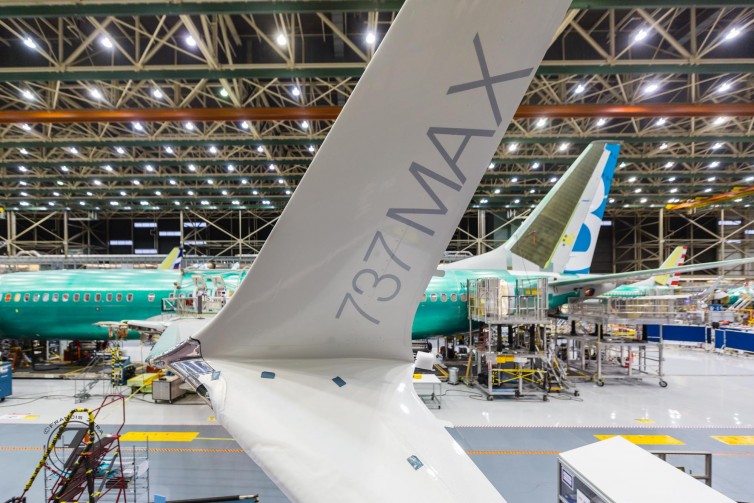
Boeing’s new Advanced Technology winglets are a distinctive feature of the 737 MAX.
The number of passengers in each respective version of the aircraft will be similar to the 737 NGs. The MAX 7 will carry 126 to 149 passengers, the MAX 8 will carry 162 to 200 (with the MAX 200 for Ryanair), and the MAX 9 will have 180 to 220. These changes are taking the 737 frame, technology, and cost savings… well… to the MAX!
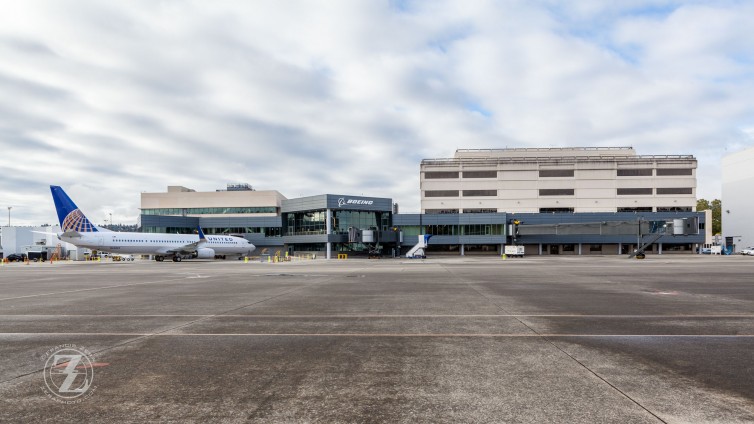
The new delivery center building has three gates and enough interior space to accommodate three simultaneous aircraft deliveries. The 737-900ER shown parked at the gate was delivered to United Airlines on Oct. 19.
Boeing opened its new Seattle delivery center for its booming 737 program on October 19 at King County International Airport, a.k.a. Boeing Field.
The 90,000 sq. ft. building is more than twice the size of the previous facility, which was located on the same site. It took 15 months to demolish the old structure, build the new one, and renovate some of the adjoining office spaces. According to Boeing officials, the new facility was needed to better accommodate the ever-increasing production rates for their 737 line. The current production rate for 737s is 42 per month, and planned rate increases will take that number to 52 per month in 2018.
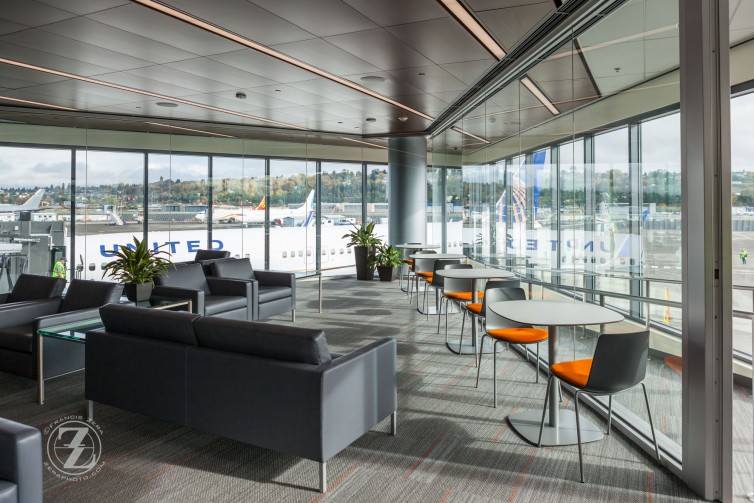
The main departure lounge at the new delivery center offers good views of the flight line.
I recently had the opportunity, on behalf of AirlineReporter, to check out the new facility and I was excited to see what an airline’s representatives experience when picking up their $85 million jet.
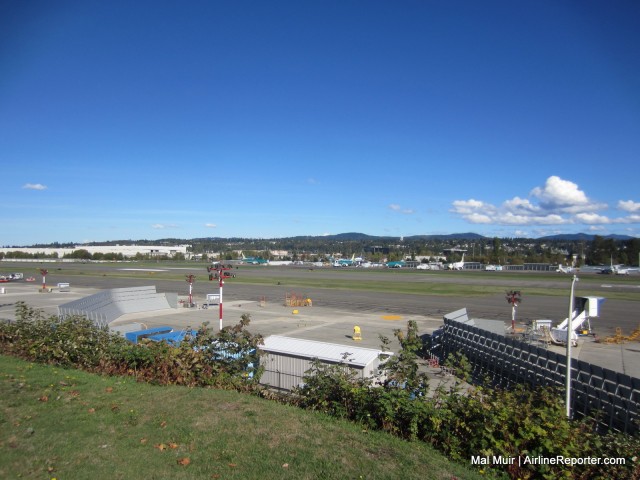
Renton Municipal Airport, home of the Boeing 737
In the past, we have featured plane spotting guides for Paine Field and also other airports like Anchorage or Tokyo Haneda. With numerous airports in the Seattle area, including SeaTac and Boeing Field, there is sometimes a forgotten, but quite important, airport for plane spotters which provides a continuous stream of aircraft to spot. I am speaking of Renton Municipal Airport, the home of Boeing’s narrow-body aircraft plant.
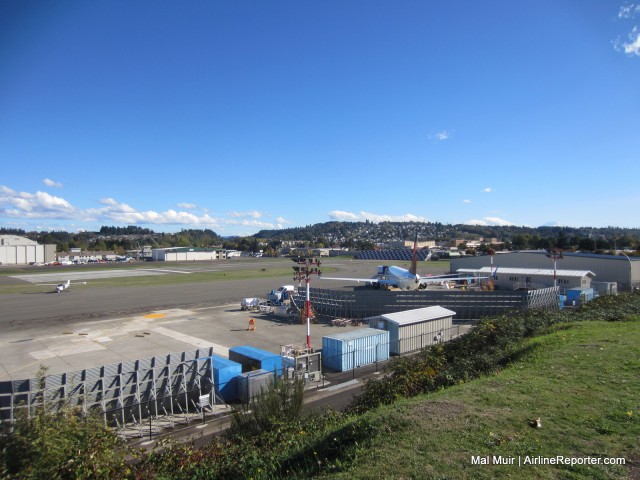
The southern threshold of Renton’s runway
The Renton Airport traces its history back to World War II. Originally built on reclaimed land from Lake Washington, the airport was built by the Department of Defense (DoD) to support Amphibious Aircraft being built by Boeing on Lake Washington. The PBB Sea Ranger project was cancelled after the prototype was built, so Boeing ended up using the facility to produce the B-29 Superfortress. By the end of the war, a total of 1,119 were built.
After the war, the City of Renton purchased the airport back from the DoD for $1 and the facility laid dormant for a few years. In 1948, the KC-97 Stratofreighter project brought the airport back to life and thus began a long and productive history of aircraft to flow out of the Boeing factory doors. The first Dash 80 aircraft, famous for the barrel roll over Lake Washington, rolled out in May 1954. Renton was the home of every single 707 built.
The 727 & 757 were all built there as well. However, Renton is famous these days for being the home of the 737, where production stands at a massive 42 aircraft per month.
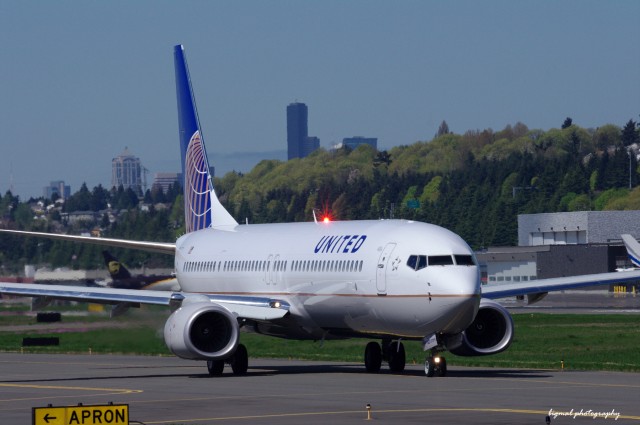
United’s latest 737-900ER, taxiing at Boeing Field
On Wednesday April 16th, United took delivery of its latest 737, but this one was special.
A 737-900ER was delivered from Boeing Field, marking a special occasion for not only Boeing but also United. The aircraft was the 8,000th 737 to roll out of the Renton factory, and became one of over 550 of the type to be delivered to United since its inception.









